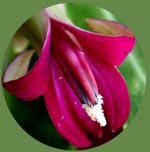Flora of the Marquesas Islands
Project Description
A number of botanical explorations to the Marquesas Islands have been undertaken since the late 1700's, but none have resulted in a comprehensive treatment of the flora. As a response to this deficiency, David H. Lorence of the National Tropical Botanical Garden and Warren L.Wagner of the Smithsonian Institution initiated the Flora of the Marquesas Islands project. This project aims to:
This project would not be possible without the assistance of the French Polynesian Delegation for Research (Délégation à la Recherche), which is part of the Ministry of Health and Research (Ministère de la Santé et de la Recherche).
PDF files from Allertonia, volume 7, 1997:
Studies of Marquesas Vascular Plants: Introduction
Introduction to the Flora and Vegetation of the Marquesas Islands
A number of botanical explorations to the Marquesas Islands have been undertaken since the late 1700's, but none have resulted in a comprehensive treatment of the flora. As a response to this deficiency, David H. Lorence of the National Tropical Botanical Garden and Warren L.Wagner of the Smithsonian Institution initiated the Flora of the Marquesas Islands project. This project aims to:
- increase scientific interaction among cooperating institutions for further exploration and research within the islands,
- database specimens and literature,
- development of a web-based vascular flora,
- produce the first Vascular Flora of the Marquesas Islands,
- assist and collaborate with the Flora of French Polynesia project, and
- provide a framework for preserving the biodiversity of the islands.
This project would not be possible without the assistance of the French Polynesian Delegation for Research (Délégation à la Recherche), which is part of the Ministry of Health and Research (Ministère de la Santé et de la Recherche).
PDF files from Allertonia, volume 7, 1997:
Studies of Marquesas Vascular Plants: Introduction
Introduction to the Flora and Vegetation of the Marquesas Islands
[ TOP ]

